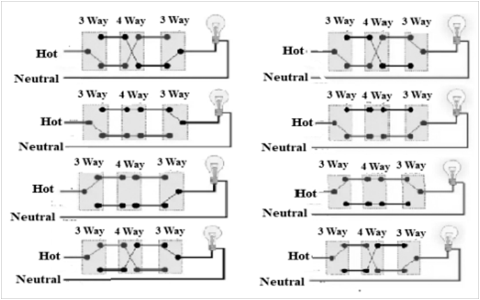Switches are an essential component in many electrical circuits and devices. Knowing how to put a switch in parallel circuit is an important skill for everyone who works with electrical systems.
Whether you’re a homeowner attempting a DIY project, or an electrician troubleshooting a complex system, understanding how to install and use switches in a parallel circuit is an important part of the job. So, let’s start by taking a look at what exactly a parallel circuit is and how a switch fits into the equation.
A parallel circuit is an arrangement of two or more different components connected to the same voltage source. In this type of setup, each component has its own direction, along which electricity can flow from the source to the component. This means that it is possible to control the strength or direction of the current in the circuit, simply by switching the components on and off. This is exactly where a switch comes in handy.
A switch is essentially an on/off button attached to a circuit that allows you to control the flow of electricity through the components. When the switch is ‘on’, the flow of electricity is permitted and the component becomes active. When the switch is ‘off’, the flow of electricity is stopped and the component becomes inactive. Placing a switch in parallel circuit is easy and straightforward.
First, select a spot on the circuit where you want to place your switch. Make sure that it is accessible and convenient to reach. Then, connect the two wires of the switch to the positive and negative terminals of the circuit. Finally, flip the switch according to your desired direction of the current. Doing this will ensure that the component (or components) connected to the switch will only receive power when the switch is turned on.
In conclusion, installing a switch in a parallel circuit is a relatively simple task. All it takes is connecting the two wires of the switch to the positive and negative terminals of the circuit, and flipping the switch to controlling the flow of electricity. With this knowledge under your belt, you’ll be confident working with switches and controlling the direction of current in any electrical circuit.
Auto Switch Parallel Series Connection Electronics Q A Circuitlab

V Cur Electricity Introductory Physics Canadian Academy Group
Elipse Parallel Connection

Physics Tutorial Parallel Circuits

How To Wire A Light Switch Simple 3 Way 4 Wiring

Solved Investigation 2 Cur And Voltage In Parallel Chegg Com

Drawing Electric Circuits Solutions

How To Make A Parallel Circuit With Pictures Wikihow

Two Way Switch Wiring One Gang And Multiway

Parallel Circuit Images Browse 4 290 Stock Photos Vectors And Adobe

Series And Parallel Circuits Learn Sparkfun Com

How To Connect A 2 Way Switch With Circuit Diagram

Can I Connect 2 Batteries In Series And Parallel Robotics Arduino Forum
/view-of-fairy-lights-on-ground-indoors-702610859-594ad42d3df78cae8198a6cd.jpg?strip=all)
Series Vs Parallel Circuits What S The Difference

B Electronics Projects How To Build Series And Parallel Switched Circuits Dummies
Add A New Light Fixture Wiring Diagrams Do It Yourself Help Com

Solving The Two Capacitor Problem By Adding A Resistor Switch Is Scientific Diagram

Series Vs Parallel But I Dont Understand Electronics
